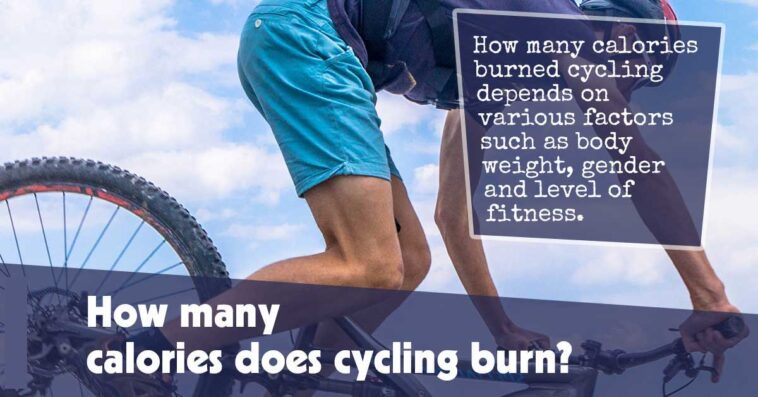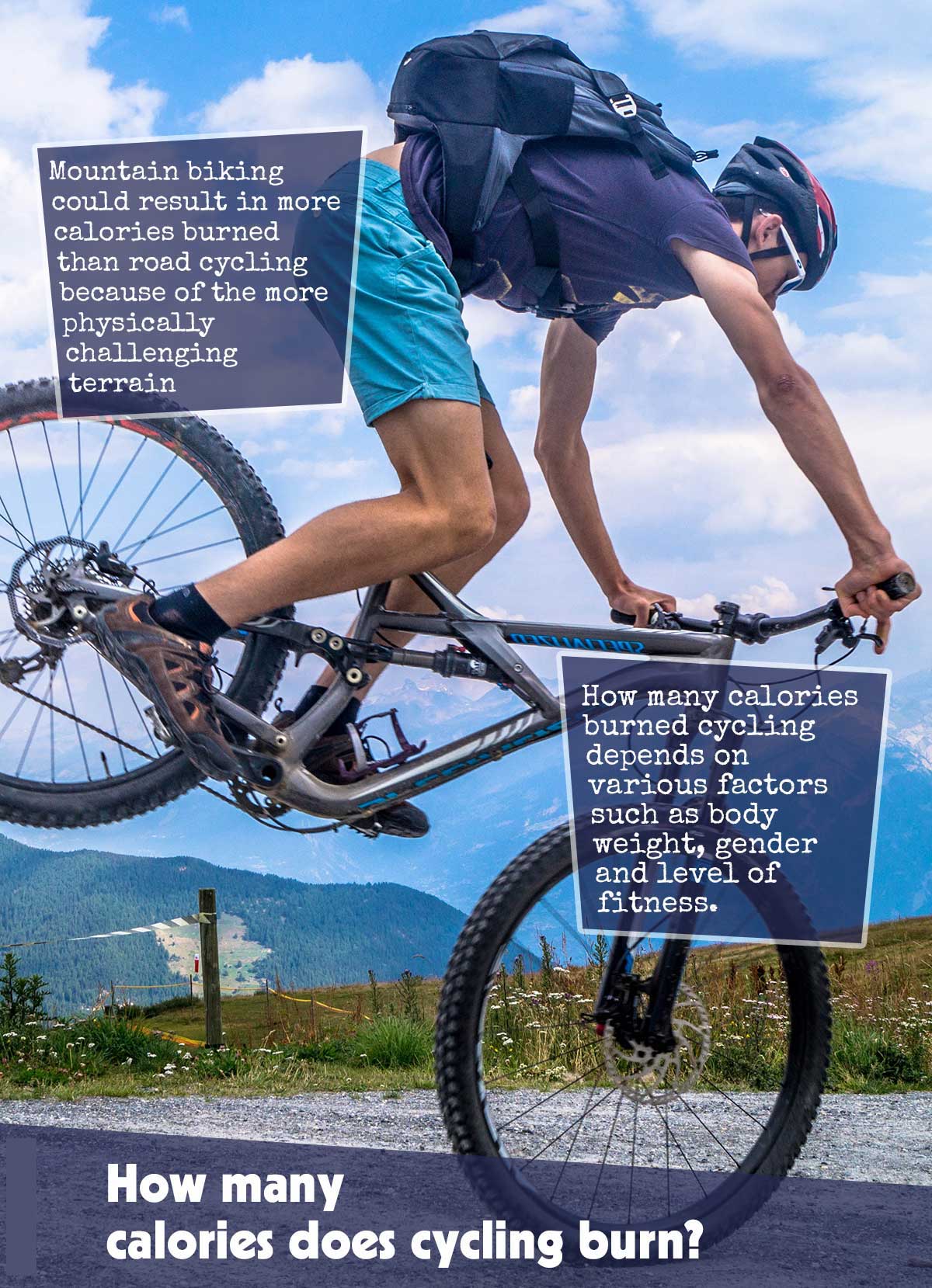How many calories does cycling burn?
How many calories burned cycling depends on various factors such as body weight, gender and level of fitness. Other factors such as distance and intensity also need to be taken into account. You are generally more likely to burn more calories the faster you cycle, simply because the body will be using more energy to go faster.
Cycling moderately at a speed of 12 – 13.9 miles/hour will result in an individual weighing 155 pounds burning 298 calories in 30 minutes. Cycling at a faster speed of 14 – 15.9 miles/hour will result in an individual weighing 155 pounds burning 372 calories in 30 minutes.
Mountain biking could result in more calories burned than road cycling because of the more physically challenging terrain. More calories will get burned if riding on challenging trails with lots of ups and downs compared to a less challenging terrain.
Calories burned using an indoor stationary bike is generally comparable to outdoor cycling.
How many calories do I burn in 30 minutes of cycling?
Thirty minutes of cycling burns an average of 200 calories depending on factors such as body weight, cycling resistance, and intensity. There are ways to maximize the number of calories burned in 30 minutes, such as increasing the resistance and intensity.
Can I burn 1000 calories by cycling?
Burning 1,000 calories is possible with various cardio exercises such as cycling, rowing, or running. Approximately 7 calories can be burned per minute cycling at a rate of 10 to 12 mph depending on body weight.
About 15 calories can be burned per minute by increasing the intensity to 14 to 16 mph. According to these estimates, a pace of 14 mph would need to be maintained for approximately 65 to 70 minutes to burn 1,000 calories.
Is 1 hour of cycling enough for weight loss?
A steady, moderate-intensity cycle burns approximately 300 calories in 60 minutes, and increasing the intensity will burn more than that. An individual weighing 155 pounds pedaling at a 12 to 13.9-mile-per-hour pace can burn as much as 298 calories in 30 minutes.
Is cycling better than running?
Although running can burn more calories per mile compared to cycling, it’s easier to ride more miles than running. Also, running is harder on the body than cycling, even when cycling at high intensity.
One study that compared trained, When cyclists were compared to runners in a study, it was found that runners had between 133% and 404% more muscle damage, up to 256% higher inflammation levels and 87% more muscle soreness compared to the cyclists after exercising 2 ½ hours a day for three days.
E-bikes vs conventional bikes
Research suggests that E-bikes are unlikely to help riders reach weekly targets for moderate to vigorous physical activity because they are likely to take fewer trips that are less demanding physically compared to conventional cyclists.1✅ JOURNAL REFERENCE
DOI: 10.1136/bmjsem-2021-001275
But e-bikes could encourage overweight or/and older individuals to decide to try bikes who wouldn’t normally think about making use of a bicycle.
The recommended weekly 150-minute targets of moderate-intensity or 75 minutes of vigorous-intensity, physical activity and accident rates of 1250 e-bikers were compared with that of 629 conventional cyclists.
Information was provided by the volunteers regarding health issues, daily physical activity, and health-related quality of life, as well as any biking accident information.
They were requested to record heart rate, distance traveled, and the riding time for every bike ride over 4 weeks, making use of an activity tracker. Rates of accidents were monitored over a 12 month period.
The e-bikers were more likely to have more underlying health issues, weigh more, be older, and perform less exercise but have a higher level of leisure time physical activity compared to the conventional bikers.
E-bikers performed about 70 less minutes of moderate to vigorous physical activity on average compared to conventional cyclists, who accrued 150+ minutes more moderate to vigorous physical activity on their bicycles. On average, conventional bikers also had more weekly trips compared to the e-bikers.
On average, the overall time riding a bicycle was also almost 25 minutes longer for the conventional cyclists, even though e-bikers took longer trips, accruing 6.5 extra minutes on average.
Also, average heart rates were higher for conventional cyclists, 119 beats/minute vs 111 beats/minute for the e-bikers, indicating a higher level of exertion.
Sex, age, underlying conditions, and reported use of a bike for commuting and sport were significant predictive factors for fulfilling weekly targets of recommended physical activity. E-bikers were about half as likely to fulfill these targets compared to conventional cyclists.
Overall, 157 near accidents and 109 accidents happened throughout the 12-month monitoring period. After potentially influential factors were accounted for, e-bikers were 63% more likely to be involved in an accident compared to conventional cyclists.
The most commonly reported reason for purchasing either type of bicycle was physical fitness, although e-bikers were twice as likely to report convenience compared to the conventional cyclists. Saving money or protecting the environment was hardly mentioned.
Calories burned cycling
To figure out how many calories burned cycling, a unit called a MET (metabolic equivalent of task) is used for the estimation of amount of energy expended while engaging in physical activity. This unit measures how hard the body is working relative to rest. When the body is at rest, the rate of energy output is 1 MET, which is equivalent to 1 calorie/kg of body weight per hour.
The MET values for various physical activities come from reliable sources and have been published in the compendium of physical activities. The calories burned from cycling are calculated with the MET value of the cycling intensity and your body weight. The cycling calorie calculator below lists 25 different cycling activities of varying intensities.




